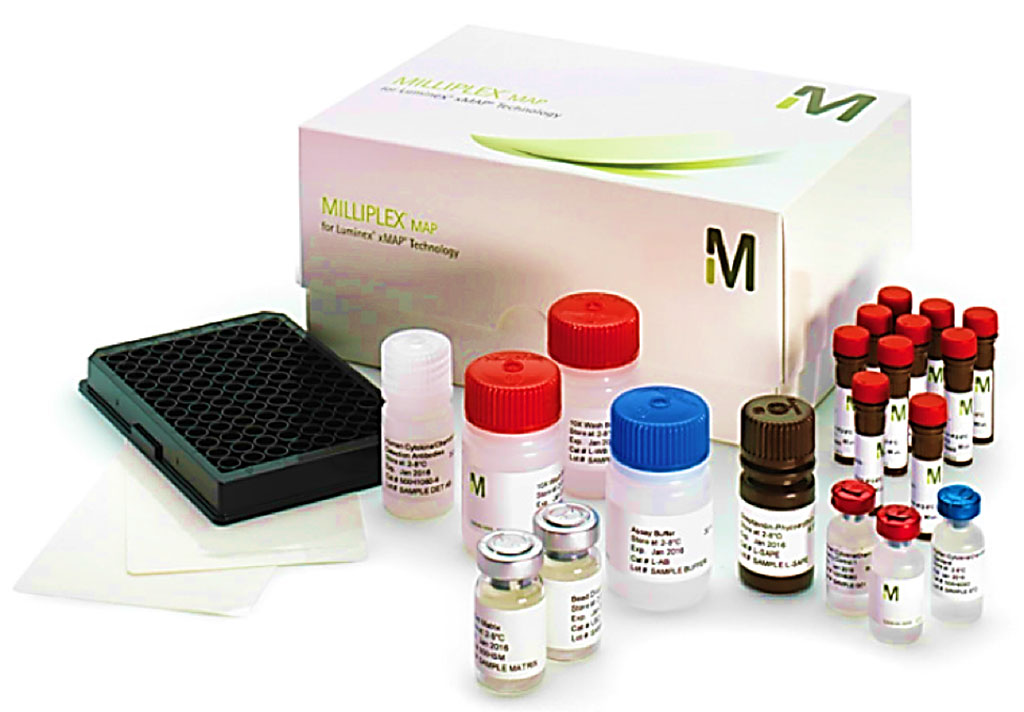Immune Chemokines Biomarkers Explored for Pediatric Tuberculosis Diagnosis
By LabMedica International staff writers
Posted on 03 Nov 2021
Diagnosis of active tuberculosis (TB) in children provides a key challenge, because most of the clinical symptoms of TB in children are non-specific with signs and symptoms that resemble common pediatric illnesses, including pneumonia and malnutrition and therefore clinical diagnosis is unreliable.Posted on 03 Nov 2021
Better-quality methods for diagnosing pediatric TB are thus immediately needed and immunological biomarker assays can bring light to this problem. Chemokines are chemoattractant molecules that control immunological responses and have been widely considered for their utility as diagnostic biomarkers of adult TB.

Image: The Luminex Magpix multiplex cytokine assay system (Photo courtesy of Bio-Rad)
Tuberculosis Specialists at the ICMR-National Institute for Research in Tuberculosis (Chennai, India) conducted a prospective case control study using children with confirmed, unconfirmed and unlikely TB. Of the 195 children screened, 167 children were recruited which includes 44 children who were microbiology positive (confirmed TB) for Mycobacterium tuberculosis (M.tb), 47 children who were microbiology negative (unconfirmed TB), 76 children with other respiratory ailments with tuberculin skin Test (TST) positive or negative as unlikely TB controls. Confirmed TB defined as microbiologically positive for M.tb., positive for Xpert MTB/RIF (Cepheid, Sunnyvale, CA, USA) or smear or culture for M.tb.
Plasma levels of CC (CCL1, CCL2, CCL3, CCL4 and CCL11) and CXC (CXCL1 CXCL2, CXCL9, CXCL10 and CXCL11) chemokines were measured using the Luminex Magpix multiplex cytokine assay system (Bio-Rad, Hercules, CA, USA). Luminex Human Chemokine Magnetic Assay kit (R&D Systems, Minneapolis, MN, USA) was used to measure the chemokine levels.
The investigators reported that baseline levels of CCL1, CCL3, CXCL1, CXCL2 and CXCL10 were significantly higher in active TB (confirmed TB and unconfirmed TB) in comparison to unlikely TB children. Receiver operating characteristics curve analysis revealed that CCL1, CXCL1 and CXCL10 could act as biomarkers distinguishing confirmed or unconfirmed TB from unlikely TB with the sensitivity and specificity of more than 80%. In addition, computation and selection of optimal biomarker combinations by integrative ROC were analyzed (CombiROC, Milan, Italy) and exhibited more than 90% sensitivity and specificity in distinguishing confirmed and unconfirmed TB from unlikely TB. Finally, classification and regression tree models also offered more than 90% sensitivity and specificity for CCL1 with a cutoff value of 28 pg/mL, which clearly classify active TB from unlikely TB.
The authors concluded that baseline chemokine signature of CCL1/CXCL1/CXCL10 could serve as an accurate biomarker for the diagnosis of pediatric tuberculosis. The study was published on October 11, 2021 in the journal BMC Infectious Diseases.
Related Links:
ICMR-National Institute for Research in Tuberculosis
Cepheid
Bio-Rad
R&D Systems
CombiROC














